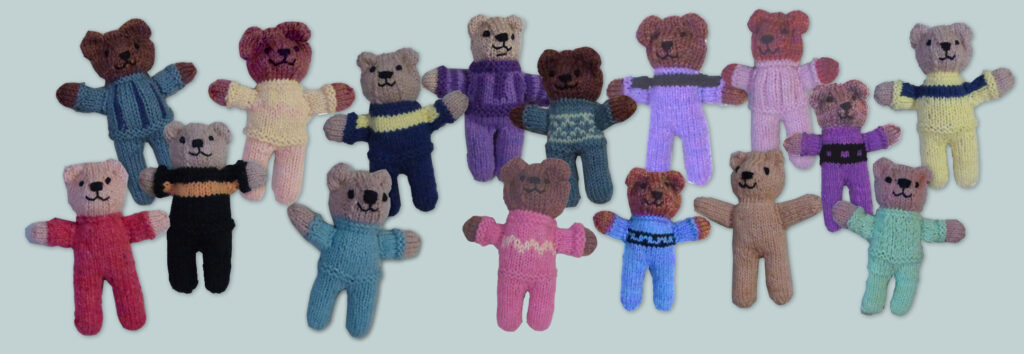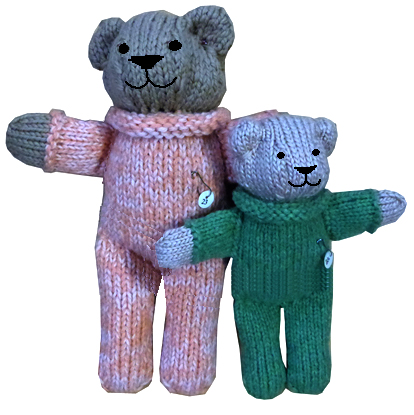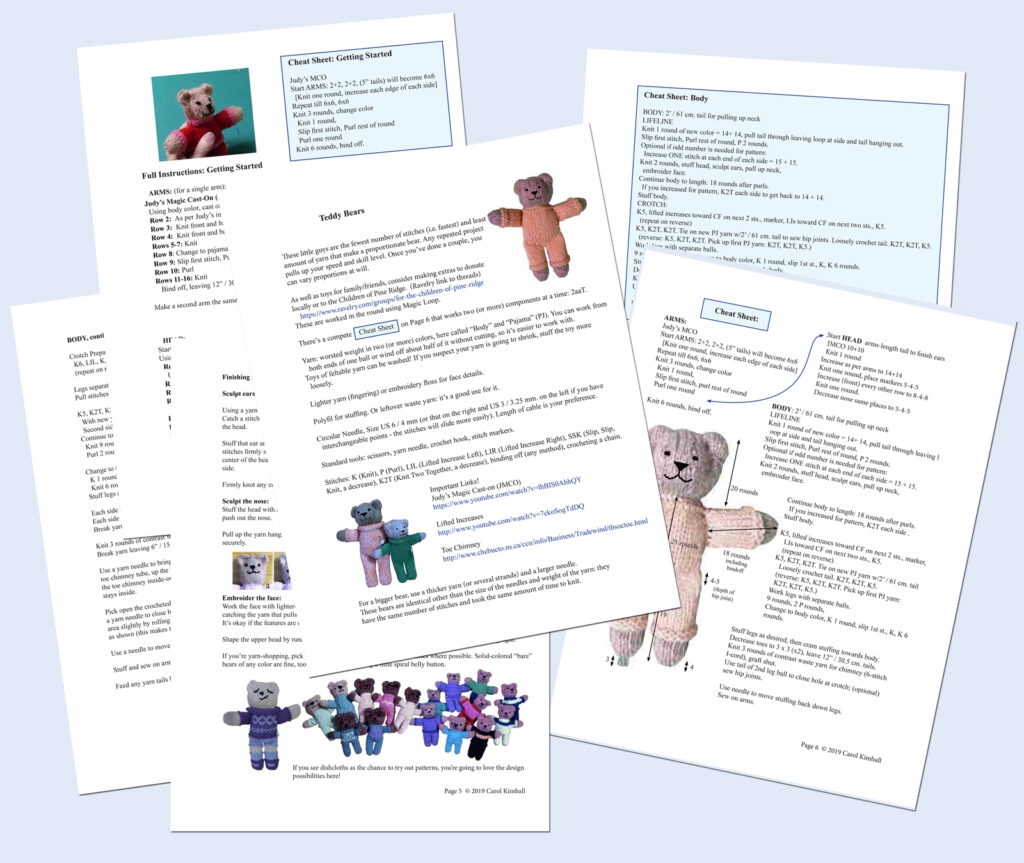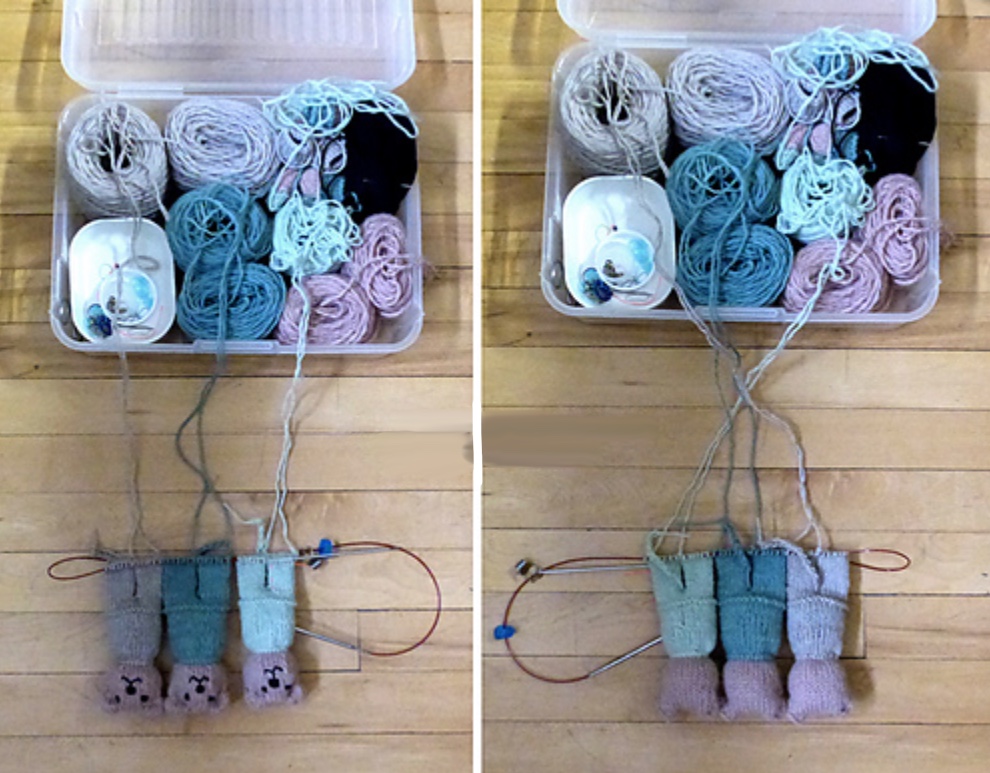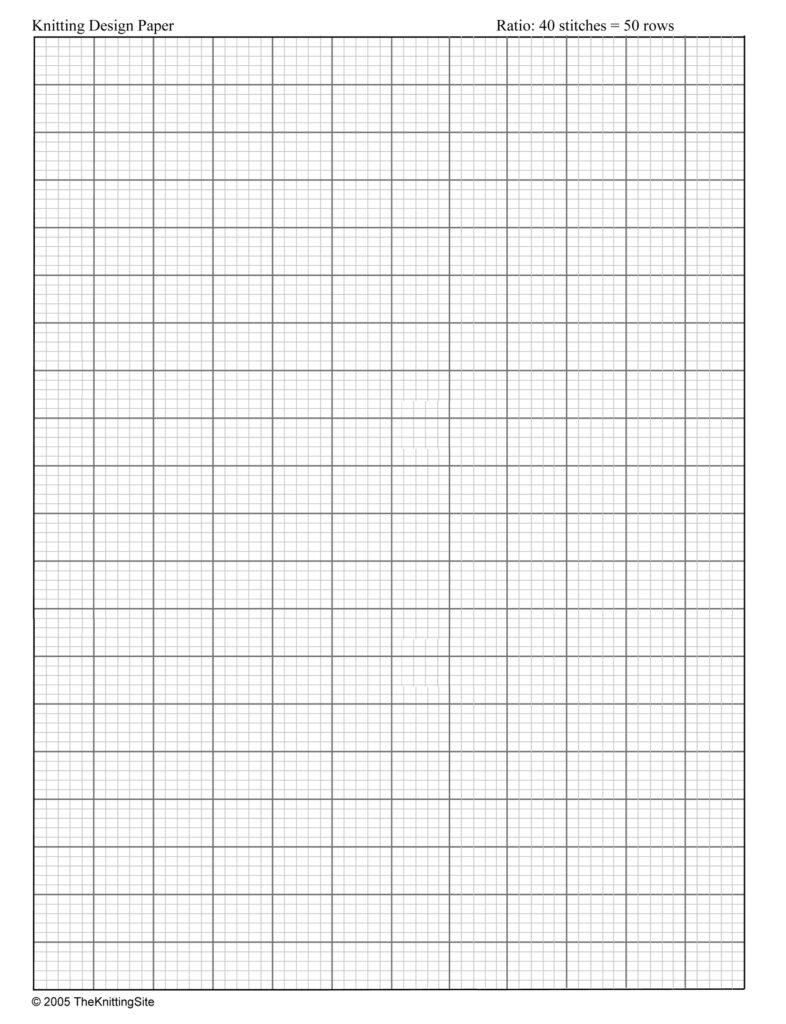6-page PDF with complete instructions
The same pattern is up on Ravelry.
These little guys take the smallest number of stitches that make a nicely shaped bear (you can tweak the proportions at will). Worsted weight yarn with U.S. 6 // 3 mm needles knits up a bear 7″ // 17.5 cm long.
These were developed to donate to the Lakota Women’s Shelters at Pine Ridge Reservation: fast to knit, a good size for tiny kids to cuddle or tote, economical of yarn/stuffing/to ship.
The upper part of the body makes a splendid canvas to try out different patterns and/or color work.
Bears are almost always knit in multiples on my Chiaogoo interchangeables with a long cable. Once past the shoulders, the heads are finished. The face details are done in a lighter weight black yarn. The highlight in the eye is one stitch of all six strands of white embroidery floss. No beads or do-called “safety eyes” (they can be chewed off by a determined teether) to choke on.
Unlike stranded knitting, the colors are always used in order so the yarns stay straight automatically. At the end of a run, when the works flip over, there’s one twist. It’s obvious when it’s time to flip again to do it the other way. Or, as sometimes happen, if it’s twisted the same direction enough that the yarn doesn’t pull freely from the cakes, no big deal to untwist.
Working from the box sure helps keep the yarns tidy.
Note also that the center bear’s body is slightly larger as that yarn is thicker.
Left: Crook Stitch, a Scandinavian pattern where two strands are worked on each round, one carried to the front, purled, and one to the back, knit. Here are a couple rows of it. Right: a Peerie pattern.
What’s the ideal proportion for a bear? Apparently whatever you had as a child. An advantage to cranking out a variety of different ones is that every one handed out will end up cherished.
Same components, different placement.
Grids for stockinette aren’t quite square; using a slightly wider rectangle shows you how your finished patterns will look. They can be used for any stranded yarn work. There are hundreds of years of Fair Isle (and other) patterns: one place to search is for Fair Isle Peerie Patterns (peerie means “wee”).
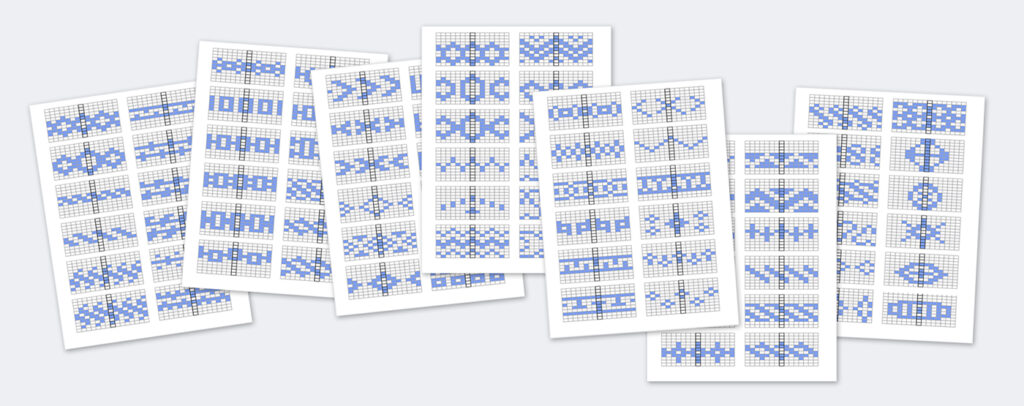
Full page blank worksheet proportioned for stockinette


